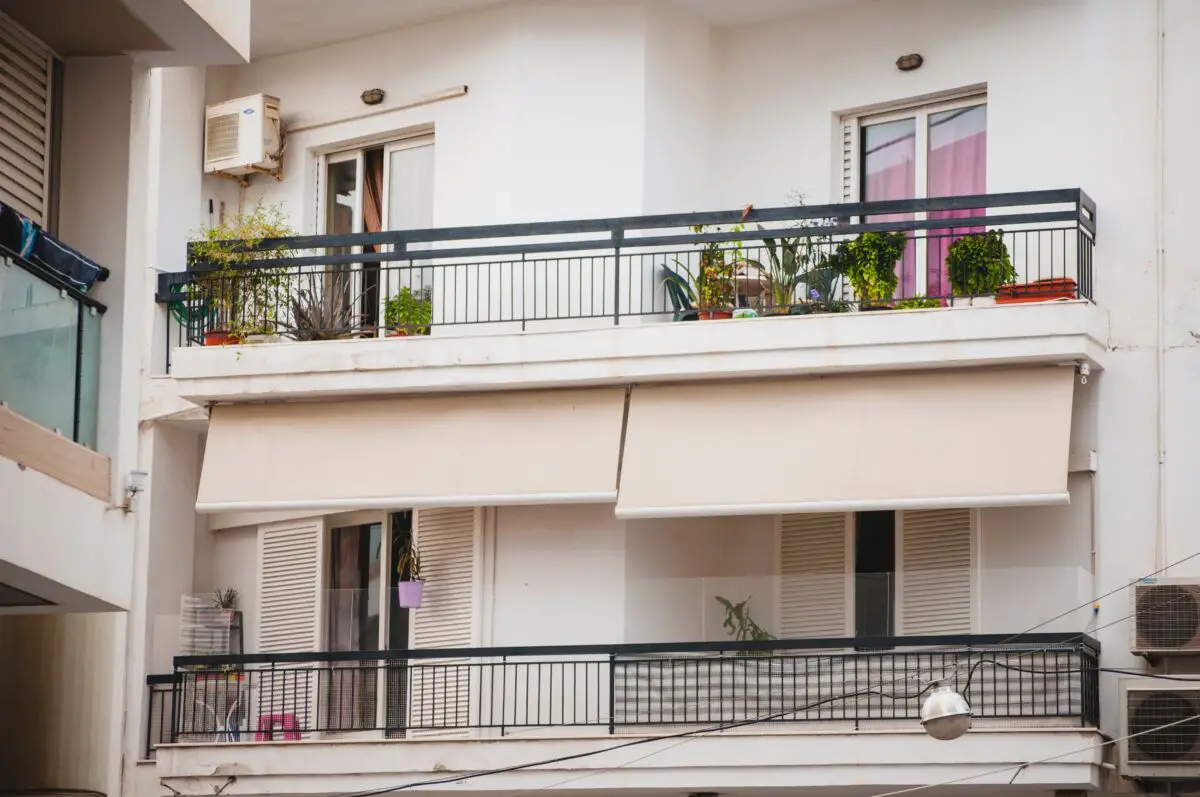If you need some extra indoor space in your home, your balcony may be the only solution. It’s a great place to enjoy the warm spring and summer days. But you may need to enclose it during the colder and wetter days.
You can enclose your balcony, but you must first check with the zoning authority in your area. You’ll also need to evaluate the local building codes and regulations, get the necessary building permits before making any major structural changes, and figure out the project cost before proceeding.
This detailed guide can help you figure out whether you can enclose your balcony and how to go about it.
Considerations Before Enclosing a Balcony
Before you enclose your balcony, you must consider these important factors.
Local Building Codes and Regulations
Building regulations may vary from one place to another. Therefore, you must perform extensive research on the local building regulations and codes.
For example, you must evaluate how the neighboring and adjoining dwelling units might possibly be affected. For instance, your proposed balcony enclosure should abide by view-blockage regulations.
Check with your local planning authorities to find out whether you need a permit to enclose the balcony of your home. If you are living in an apartment block, you might also need to seek approval from the property management. That may also be subject to the rules and regulations of the homeowners’ association in your area.
You should also consider that the full or partial enclosure of a balcony in a new house after the building has been approved or constructed may need special approval.
You will also need to observe various country-wide regulations regarding balcony enclosures. Here are a few of the most important rules:
- The Façade Inspection and Safety Program (“FISP,” previously called Local Law 11) requires inspection on balconies for properties higher than six stories, every five (5) years.
- Buildings with balcony enclosures installed without proper permits classified as unsafe or “Safe with a Repair and Maintenance Program” (SWARMP).
- The 1976 Memo permits enclosed balconies that are readily removable, non-combustible, lightweight, and have no masonry or insulation.
- Screened enclosures are not considered permanent parts of a building, so they can be installed without permits.
- Enclosures with solid panels are not considered permanent parts of a building, but they require the filing of a building notice.
Nature of the Balcony
Your balcony might be part of your own section or part of common property. It’s important to know which of these your balcony is, because you might not have the exclusive right to use it if your balcony is part of common property.
If a balcony forms part of a homeowner’s section, then it will be located within the solid lines indicating the boundaries of the particular section. So, check for that beforehand.
The process will be easier if your balcony is within your property because enclosing it will not amount to extending your property.
The Cost of Enclosing
After keenly evaluating all the legal and regulatory requirements, you must determine whether you have enough finances for the job.
Such an in-home renovation may be very costly. Therefore, consider the resources that you have at your disposal when making the cost estimate. You can save some bit of cash if you already have the materials for the job at hand.
Also, you can consult a home renovation expert or look for estimates online.
How much exactly will you need to spend?
Well, the cost of enclosing a balcony might be similar to enclosing a patio, due to the basic similarities of the two spaces. In that regard, you can expect a cost running from as low as $500 to as high as $34,500. And the average price would be about $14,000.
The price varies based on differences in such factors as balcony size, labor, type of materials, type of enclosure, permits, and decor.
Creative Ways of Enclosing Your Balcony
If your home has limited space, converting the empty balcony into a usable place can really be of great help. More so, if you figure out a really creative way to make it feel just like an indoor room.
Balcony Privacy Screens
You may want the extra space to be an extension of the living room where you can have your guests sit. Or perhaps you just want to create a cozy little dining room. In both cases, you will still want the area to be private.
Therefore, you should consider installing a partition screen to keep people on your neighbor’s balcony from viewing your balcony. Alternatively, you can create a natural green barrier using vines or creepers to protect your balcony from prying eyes.
In addition to closing your balcony door every night, you could also consider enclosing your balcony.
Create a Glass Room
Installing a balcony glass is an innovative way of enclosing your balcony to create an outdoor living space that is protected from the elements. Turn your spare space into an attractive reading corner or sunroom by enclosing it with clear or tinted glass.
For an all-weather space that you can use throughout the year, consider enclosing the balcony using sliding glass windows.
The unique insulating properties of glass will keep your balcony warm in winter. In summer, it helps repel excessive heat if you installed coated glass.
However, you may still need to get weather resistant furniture for your balcony, to withstand exposure to the sun or the elements when you open the glass windows.
Installing Sheer Curtains
Sheer curtains will give your balcony an exotic and tropical feel.
Canvas curtains, in particular, come with a “safari” appeal, which, gratefully, also offers protection from the sun.
If you want a versatile solution for enclosing your balcony, why not use easy to install curtain “wires.” They are washable and can be closed or opened depending on your desired level of privacy on any given day.
These are affordable and the least risky installations if you live in an area prone to a storm.
Bamboo Roller Blinds
Bamboo roller blinds are a good choice, particularly if you live in a tropical climate region.
Nice-looking roller blinds can be installed with a hook attached to the balcony rail, to keep them orderly. They provide not only privacy but also a cool shade as the breeze can travel through bamboo.
Because bamboo weathers quickly, you should probably use installations that you can easily take down towards the end of summer and replace.
What to Do After Enclosing Your Balcony
Now that you have successfully enclosed your balcony into a cozy private space, what next?
Well, there is still a bit of work to do to make this space more livable.
Decorations and Furnishing
You can now think of innovative ways to decorate the space in order to make it more productive and appealing while you work or relax there.
Place a coffee table and comfy chair of your desire from where you can enjoy a view of the world from your glass room balcony. Add some shelves where you can store items neatly. Hang pieces of art and place some potted plants strategically to give the space a warm and welcoming feel.
And top it up with a nice rug.
If you plan to use the enclosed balcony in winter, you can install a space heater, and you are set for an enjoyable experience.
Consider the Lighting
Another important component of making your new living space more productive is making sure that there is adequate lighting.
Whether it is a table lamp or an overhead fixture, the right lighting alters the mood of your new living space and makes it usable at night.
Want a more indoor feeling? Consider getting an elegant chandelier.
Protect the Balcony Enclosure
To ensure durability, protect the balcony enclosure by installing a siding material.
Just like you do for your indoor spaces, you can use materials like wood shingle siding or vinyl strip siding. You can also use wood paneling or metal siding.
When done properly, your enclosed balcony will feel like part of the indoors.
Conclusion
Enclosing your balcony does not only provide more private space but also protects you from the elements.
With some creativity and crafty spending, you can turn that idle space into a wonderful private getaway. Just make sure that you consult your contractor or architect as they are more conversant with local building codes and regulations.

